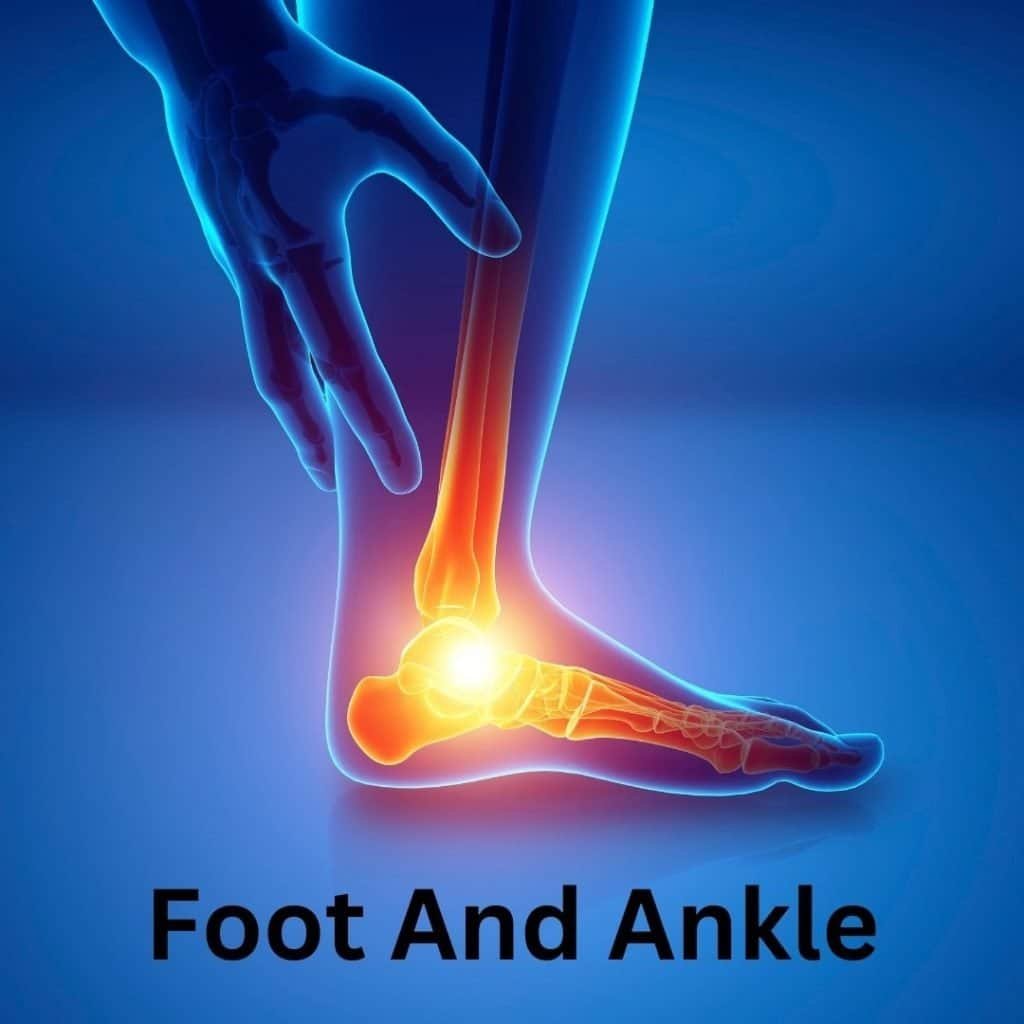The Intricacy of Foot and Ankle Anatomy
When it comes to understanding your body, the intricacies of foot and ankle anatomy can often be overlooked. Yet, these structures play a crucial role not only in supporting your daily activities but also in ensuring optimal performance during sports and physical activities. With over 26 bones, numerous joints, and a network of ligaments and tendons, the foot and ankle represent a remarkable engineering feat of the human body.
Understanding the Structure of the Foot and Ankle
To grasp the complexities of your foot and ankle, it’s essential to categorise their components into three primary sections: the hindfoot, midfoot, and forefoot. Each of these sections performs distinct functions that contribute to your overall mobility and stability. The hindfoot consists of the ankle joint, primarily the tibial talar joint, which facilitates crucial up-and-down movements. Additionally, the hindfoot’s unique structure also supports inversion and eversion movements, crucial for maintaining balance while walking or running. At the centre of this biomechanical puzzle lies the talus bone. Its pivotal nature allows for a range of movements, yet it also makes it susceptible to injury if misaligned. Maintaining awareness of these components’ roles can greatly enhance your understanding of foot mechanics and their impact on your overall health. Many individuals experience at least one ankle sprain throughout their lives. If left untreated or poorly managed, these injuries may lead to long-term repercussions, such as chronic instability or persistent pain. Proper footwear, tailored to your needs, can have a profound effect on minimising such risks. Engaging with professionals for personalized advice on shoe selection ensures you choose the right model that accommodates your foot’s unique structure and your lifestyle choices.
Common Injuries and Their Implications
In the world of sports, ankle sprains are not just inconvenience; they can jeopardise an athlete’s career. Many wrestle with the pressure of returning to competitive form quickly, which sometimes pushes them toward invasive surgeries when conservative treatments such as Osteopathy and Acupuncture would be more beneficial. Interestingly, the need for effective injury prevention strategies cannot be overstated. Many people, whether elite athletes or recreational participants, often neglect standard practices like proper stretching. This neglect can inadvertently set the stage for injuries. Recommended practices include warm and strategic stretching, which empowers you to cultivate a deeper awareness of your body while preventing injuries by keeping muscles and joints in good condition. To give you a clearer picture, here’s a quick look at some of the common injuries associated with the foot and ankle:
| Injury | Description | Prevention |
|---|
| Ankle Sprains | Common injury often resulting from twisting or overextending the ankle. | Proper footwear, warm-up exercises, and balance training. |
| Achilles Tendonitis | Injury to the Achilles tendon, often due to overuse. | Gradual training increases, stretching, and strengthening exercises. |
| Plantar Fasciitis | Pain in the heel and bottom of the foot caused by inflammation of the plantar fascia. | Arch support in shoes and proper stretching routines. |
A key takeaway here is that understanding your body’s signals and maintaining optimal foot health positions you to perform better and sustain an active and injury-free lifestyle.
The Future of Foot and Ankle Treatments
As advancements in medical science continue to develop, the future of treating foot and ankle conditions looks promising. Innovations in surgical techniques, such as cartilage transplantation, along with the benefits of functional rehabilitation programmes, offer renewed hope for those suffering from chronic issues.
Osteopathy and
Acupuncture have great potential for these treatments to enhance recovery is immense, enabling individuals to return to their activities sooner while reducing dependence on surgical interventions.
Education and Awareness as Preventative Measures
Ultimately, embracing a proactive approach to
foot and ankle health is imperative. As highlighted throughout this discussion, education around proper footwear, injury prevention strategies, and the importance of stretching can make a world of difference. Dr. Granite sums this sentiment aptly when he reminds us that, “avoiding injury is far superior to recovering from it.” By understanding the intricate relationship between your foot and ankle anatomy and your overall fitness, you can significantly enhance your quality of life. Knowledge is undoubtedly power, and knowing how to care for these vital structures positions you not just for a healthier, more active lifestyle, but also for long-term athletic success.
Preventative Measures for Foot and Ankle Injuries
Foot and ankle injuries are more prevalent than one might think, regardless of activity level. In the quest to avoid these injuries, understanding the importance of preventative measures becomes essential, particularly the role of appropriate footwear, stretching, and the concept of dynamic stability.
The Importance of Proper Footwear
Choosing the right footwear is paramount in safeguarding your foot and ankle health. A well-fitted shoe, typically designed with a wide toe box and sufficient arch support, reduces the risk of injuries by over 30%. This is particularly significant for individuals who engage in athletic activities or are on their feet for prolonged periods. When selecting footwear, consider your foot architecture and activity type. Footwear should cater not only to your aesthetic preferences but also to your specific needs. The right shoes can prevent damage and play a pivotal role in injury prevention. Dr. Sonia Ahmed, a leading expert in foot and ankle health, emphasizes that everyone’s foot is unique; therefore, professional advice during shoe selection can be invaluable. Additionally, it’s essential to be cautious about certain styles known to contribute to injuries. For instance, high-heeled shoes can destabilize your posture, leading to various foot ailments. When opting for everyday shoes, prioritising comfort and support over style can dramatically improve your overall foot health.
Stretching and Strengthening Exercises
Incorporating stretching and strengthening exercises into your routine is another vital preventative measure. Athletes should especially focus on stretching their calves and feet to enhance movement and flexibility, thereby reducing their risk of injury. Regular stretching not only improves performance but can significantly lower the chances of sustaining an injury. It is advised to establish a warm-up routine before engaging in any sports or physical activities. This ensures that muscles are prepared for rigorous movement, thus maintaining their condition. A few effective stretches include calf raises, toe pulls, and ankle circles, all of which enhance flexibility and strength. Alongside stretching, strengthening exercises targeted at your lower extremities can provide more stability, particularly for those involved in high-impact sports. Consider implementing resistance band exercises that target the
foot and ankle area, as they are highly effective in building strength and preventing common injuries.
The Role of Dynamic Stability
Dynamic stability, or the ability to control your body movement during activity, also plays a crucial role in preventing injuries. Instability can lead to falls and ankle sprains, particularly in those who partake in sports demanding rapid directional changes. Incorporating stability training into your routine is essential for maintaining balance and coordination. Dynamic stability exercises can vary from simple single-leg stands to more complex balance boards and agility drills. Engaging in these activities not only firms the muscles but also enhances your body’s ability to respond to unexpected movements. This is particularly vital for athletes and active individuals; you’ll find that these exercises can yield significant improvements in performance while reducing the risk of injury.
Real-Life Implications
Think about your daily activities and sports practices. Do your shoes support your foot structure adequately? Reflecting on these practices can help identify areas for improvement in your routine. Moreover, precedence should always be given to education surrounding the importance of foot and ankle health. “Preventing injuries is more effective than treating them.” This statement underscores the value of proactive measures – prioritise your foot health, and the benefits will extend beyond simply avoiding injuries. A strong foundation in good habits not only effectively mitigates risks but can enhance your overall functionality and quality of life. In summary, being diligent about your footwear choices, maintaining a robust stretching and strengthening routine, and understanding the importance of dynamic stability can profoundly impact your risk of foot and ankle injuries. Embrace these preventative measures, and you’ll not only enhance your athletic performance but also improve your daily activities’ comfort and effectiveness.
Understanding Treatment and Recovery for Injuries
The dynamics of foot and ankle anatomy are intricate. The foot is divided into three primary sections: the hind foot, mid foot, and forefoot. The hind foot includes essential structures like the ankle joint, which allows for critical movements such as inversion and eversion. Knowledge of these mechanical relationships can be beneficial when evaluating the impact of footwear choices on foot health. High-heeled shoes, for instance, can exacerbate injuries due to destabilisation of the ankle. Always choose footwear that supports your individual foot architecture, especially during everyday activities. Rehabilitation is of equal importance in this journey. It is recognised that early rehabilitation can accelerate recovery significantly, with studies indicating a 25% increase in recovery speed for athletes who engage in focused rehabilitation efforts. The role of rehabilitation cannot be overstated; it is the bridge that brings you back to your previous level of activity, helping to restore strength and functionality. Many athletes face societal pressures to recover swiftly and rejoin competition. It is vital, however, to manage expectations and focus on a well-rounded recovery strategy that includes appropriate rehabilitation over risky invasive surgeries. Aggressive interventions might seem appealing in the short term, but they often bring long-term repercussions. Understanding the value of conservative treatments can set the foundation for sustained recovery. As you engage with your treatment pathway, remember that the foot and ankle are interrelated with the entire body. Their health is crucial for maintaining proper alignment and strength throughout the kinetic chain. Foot and ankle problems can lead to significant issues in the knees, hips, and even the spine. Therefore, fostering good foot health must be a top priority in your overall well-being strategy. In conclusion, your journey towards effective treatment and recovery hinges on a few essential principles. First, seek professional help early to ensure you receive the necessary assessment and intervention tailored to your unique needs. Embrace the advancements available in treatment methodologies and understand that rehabilitation is a fundamental part of the recovery process. Balancing progress with the acknowledgement that proper rehabilitation and education can help mitigate potential injuries will empower you to sustain a healthier, more active lifestyle.






